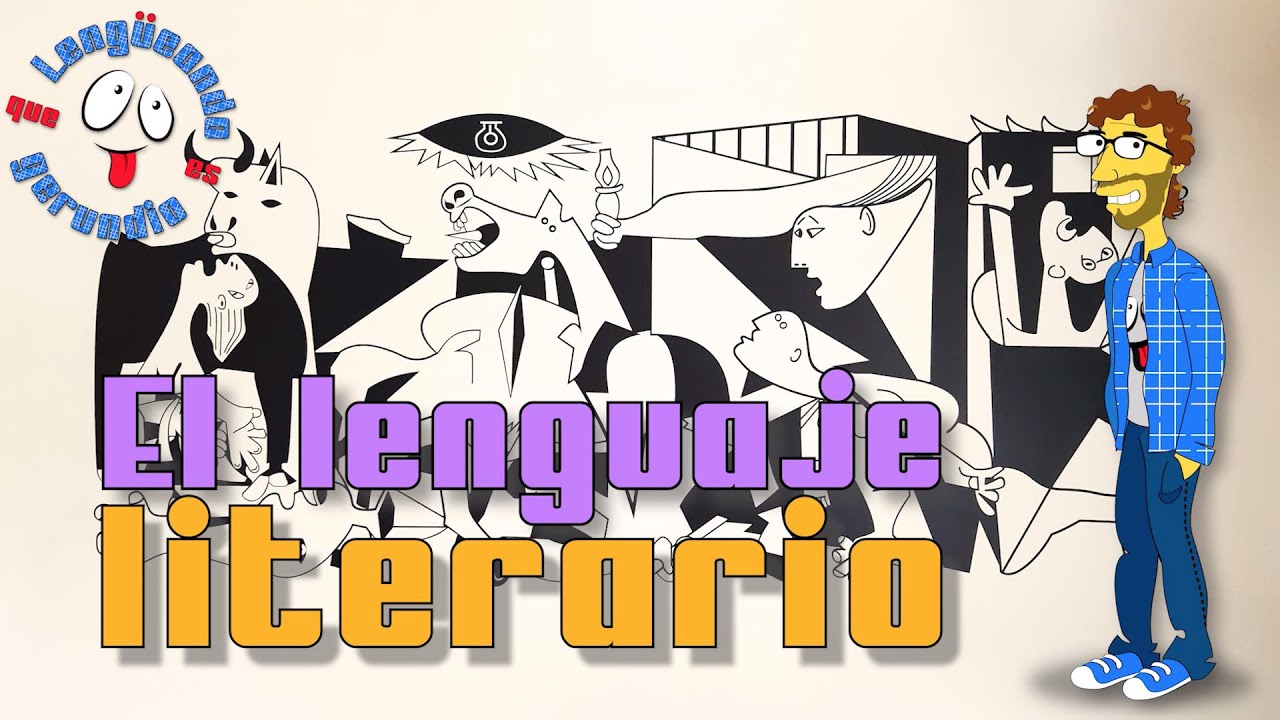Los RECURSOS LITERARIOS más comunes y EJEMPLOS📝
Summary
TLDREste guion detalla una amplia gama de recursos literarios que enriquecen la expresividad y estilo de un texto. Se clasifican en fonéticos, semánticos y morfosintácticos, con ejemplos como aliteración, onomatopoeia, metáforas, alegoría y personificación. Cada recurso se explica con claridad, permitiendo al lector comprender su propósito y aplicación en la literatura, lo que promueve una apreciación más profunda del lenguaje y su belleza.
Takeaways
- 📚 Los recursos literarios son herramientas o elementos utilizados en un texto para darle expresividad y un estilo particular.
- 🎶 Los recursos fonicos incluyen aliteración, onomatopoeia, paronomasia, similicadencia y palindromia, que se basan en el uso de sonidos y rimas.
- 🌊 La aliteración es la repetición de sonidos similares para dar mayor expresividad y atención auditiva al texto.
- 🐱 La onomatopoeia imita sonidos de la naturaleza o objetos comunes, representando fonéticamente fenómenos del entorno.
- 😜 La paronomasia juega con palabras que suenan similares pero tienen significados distintos, añadiendo gracia o tono irónico al texto.
- 🔄 La similicadencia repite palabras con sonidos similares, generalmente en verbos conjugados de la misma persona y tiempo.
- 🔁 La palindromia es un juego de palabras que se lee igual de izquierda a derecha y viceversa, añadiendo creatividad al texto.
- 🌐 Los recursos semánticos como la comparación, metáfora, alegoría, metonimia, antítesis, personificación, apostrofe, calambur y hipérbole sirven para enriquecer el significado y la expresión del texto.
- 🔗 La comparación y la metáfora establecen relaciones entre conceptos para resaltar diferencias o transmitir significados implícitos.
- 🏰 La alegoría y la metonimia usan la asociación de ideas o la sustitución de nombres para representar conceptos más amplios o abstractos.
- 🌙 La personificación y la apostrofe otorgan cualidades humanas a seres irracionales o direccionan emociones hacia seres inanimados, enriqueciendo la narrativa.
Q & A
¿Qué son los recursos literarios y cómo se clasifican?
-Los recursos literarios son herramientas o elementos utilizados en un texto para darle expresividad y un estilo particular. Se clasifican en recursos fonéticos, semánticos y morfosintácticos.
¿Cuál es la función de la aliteración en la literatura?
-La aliteración consiste en la repetición de sonidos similares para dar mayor expresividad al texto y captar la atención auditiva, otorgando musicalidad y dinamismo a los textos.
¿Cómo se define la onomatopeya y cuál es su propósito en la literatura?
-La onomatopeya es la reproducción de sonidos de la naturaleza o objetos comunes en la literatura, usada para imitar expresiones de animales o fenómenos ambientales, y representar efectos fonéticos cotidianos.
¿Qué es la paronomasia y cómo se utiliza en la literatura?
-La paronomasia se refiere al uso de palabras con sonidos similares pero significados diferentes, con el objetivo de causar gracia o dar un tono irónico o satírico al contenido, ayudando a que la idea expresada quede en la memoria del lector.
¿Qué es la similitud y cómo se diferencia de la metáfora?
-La similitud, también conocida como símile, asocia dos palabras con significados similares para resaltar diferencias, mientras que la metáfora transmite un significado que va más allá del literal, sin usar comparaciones directas.
¿Cuál es la función de la alegoría en la literatura?
-La alegoría omite el significado denotativo de una palabra para usar su sentido figurado, expresando un concepto o idea con un significado diferente al expuesto literalmente.
¿Qué es la metonimia y cómo se diferencia de la metáfora?
-La metonimia es asignar un nuevo nombre a una palabra o concepto basado en similitudes de significado, mientras que la metáfora establece una relación directa entre dos cosas para transmitir un significado más profundo.
¿Qué es la antítesis y cómo se utiliza para contrastar ideas en la literatura?
-La antítesis contrasta dos oraciones o ideas para estimular el razonamiento, opuesta a una expresión que en un momento dado puede tener características similares.
¿Cuál es el propósito de la personificación en la literatura?
-La personificación o prosopopeya le da rasgos, características o cualidades humanas a seres imaginarios o irracionales, cultivando la imaginación y permitiendo una percepción de cambios con puntos de vista amplios.
¿Qué es la hipérbole y cómo se utiliza para realzar la expresividad del texto?
-La hipérbole, o exageración, consiste en amplificar o incrementar las cualidades o características de un sujeto o objeto para hacer el texto más expresivo.
¿Cómo se define la enumeración y cuál es su propósito en la literatura?
-La enumeración es la acumulación o suma consecutiva de elementos que pueden o no formar parte del mismo contexto, y se utiliza para ampliar y profundizar el contenido del discurso.
Outlines

Этот раздел доступен только подписчикам платных тарифов. Пожалуйста, перейдите на платный тариф для доступа.
Перейти на платный тарифMindmap

Этот раздел доступен только подписчикам платных тарифов. Пожалуйста, перейдите на платный тариф для доступа.
Перейти на платный тарифKeywords

Этот раздел доступен только подписчикам платных тарифов. Пожалуйста, перейдите на платный тариф для доступа.
Перейти на платный тарифHighlights

Этот раздел доступен только подписчикам платных тарифов. Пожалуйста, перейдите на платный тариф для доступа.
Перейти на платный тарифTranscripts

Этот раздел доступен только подписчикам платных тарифов. Пожалуйста, перейдите на платный тариф для доступа.
Перейти на платный тарифПосмотреть больше похожих видео

¿QUÉ ES EL ARTÍCULO INFORMATIVO? - Estructura y ejemplos. [Video educativo para niños]

Session 10 ADM4411

Trouver un plan de commentaire au bac français | La méthode pas-à-pas ! ✨✨✨

EL LENGUAJE LITERARIO. Lengüeando, que es gerundio. Aprende Lengua y Literatura de forma divertida.

Autonomía e independencia

HISTORIA DE LOS PROCESADORES DE TEXTO
5.0 / 5 (0 votes)
